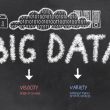Predictive analytics has become an essential tool for financial institutions to make informed decisions based on historical data and market trends. With the advent of Artificial Intelligence (AI), predictive analytics has taken a quantum leap in accuracy, efficiency, and scalability. AI-driven predictive analytics enables financial firms to forecast future trends, manage risks, and gain a competitive edge in a rapidly evolving industry. In this article, we will explore the impact of AI on predictive analytics in finance, how it has transformed the landscape, and what the future holds.
Understanding Predictive Analytics in Finance
Predictive analytics in finance refers to the use of data, statistical algorithms, and machine learning techniques to identify the likelihood of future outcomes based on historical data. It helps financial institutions assess risks, identify investment opportunities, and optimize their operations.
Traditionally, predictive analytics relied on structured data sets and statistical models that could only process a limited amount of data. These models, while useful, often struggled with the complexity and volume of financial data in real-time. This is where AI has made a significant difference. By incorporating machine learning and deep learning algorithms, AI-driven predictive analytics can analyze massive data sets, identify hidden patterns, and generate more accurate forecasts.

The Role of AI in Enhancing Predictive Analytics
Artificial Intelligence has reshaped the predictive analytics process by introducing advanced algorithms and processing capabilities. Some key roles of AI in improving predictive analytics include:
- Handling Big Data: AI systems can process and analyze vast amounts of structured and unstructured data from various sources such as market feeds, social media, and financial reports, which were previously difficult to manage.
- Improved Accuracy: Machine learning algorithms can constantly learn from new data and refine their models, resulting in more accurate predictions. AI systems can adapt to changing market conditions, which is crucial in the volatile world of finance.
- Real-time Data Analysis: AI can process data in real time, allowing financial institutions to make quicker decisions. This is especially important for high-frequency trading, fraud detection, and credit risk assessment.
- Automation of Complex Tasks: AI has automated many manual, time-consuming tasks in predictive analytics, such as data cleaning and model building. This reduces human error and allows financial analysts to focus on more strategic decision-making.
- Risk Management: Predictive analytics powered by AI helps financial firms assess and mitigate risks more efficiently. By analyzing past market behavior and external factors, AI systems can provide early warnings for potential market downturns or credit defaults.
Key Applications of AI Predictive Analytics in Finance
AI-powered predictive analytics has wide-ranging applications across the finance sector, transforming how organizations operate and make decisions.
1. Fraud Detection and Prevention
AI-driven predictive analytics can detect fraudulent activities by analyzing transaction data, customer behavior, and other relevant patterns. By identifying anomalies in real-time, AI systems help financial institutions prevent fraud before it occurs, reducing financial losses and improving customer trust.
2. Credit Scoring and Loan Approval
Traditionally, credit scoring relied on static data such as credit history and income. AI predictive analytics, however, considers a broader range of factors, including behavioral data, social media activity, and transaction history. This allows lenders to make more informed decisions when approving loans, leading to lower default rates and better customer service.
3. Portfolio Management and Investment Strategies
AI enables financial institutions to optimize portfolio management by predicting market trends, asset performance, and risk factors. AI systems can analyze historical data, economic indicators, and even global events to recommend the best investment strategies. This has led to the rise of robo-advisors, which use AI to provide personalized financial advice and manage investment portfolios.
4. Risk Management and Market Forecasting
AI helps in assessing various financial risks by analyzing historical and real-time data. It can predict market downturns, currency fluctuations, and other macroeconomic factors. This allows firms to develop strategies to mitigate potential losses and make informed investment decisions.
5. Customer Behavior Analysis and Personalization
AI predictive analytics can track customer spending patterns, preferences, and behaviors. This enables financial institutions to offer personalized financial products and services. By anticipating customer needs, banks and fintech companies can enhance customer satisfaction and loyalty.
Challenges and Limitations of AI Predictive Analytics in Finance
While AI-driven predictive analytics offers tremendous benefits, it also comes with its own set of challenges and limitations.
- Data Privacy and Security: The use of AI requires access to vast amounts of personal and financial data, raising concerns about privacy and data breaches. Financial institutions must ensure they comply with regulations like GDPR (General Data Protection Regulation) and CCPA (California Consumer Privacy Act) to protect sensitive information.
- Model Transparency: AI algorithms, particularly those based on deep learning, can be complex and opaque. This lack of transparency can make it difficult for regulators and financial professionals to understand how decisions are being made, leading to concerns about accountability and trust.
- High Costs and Technical Expertise: Implementing AI-powered predictive analytics requires significant investment in technology infrastructure and skilled personnel. Not all financial institutions have the resources or expertise to deploy AI effectively.
- Regulatory and Ethical Considerations: The increasing use of AI in finance raises questions about fairness, accountability, and bias in decision-making. Regulatory bodies are still catching up with the rapid advancements in AI, which can create uncertainty for financial institutions.
Comparative Analysis: Traditional vs. AI-Driven Predictive Analytics
| Aspect | Traditional Predictive Analytics | AI-Driven Predictive Analytics |
|---|---|---|
| Data Processing Capacity | Limited to structured data | Can handle both structured and unstructured data |
| Accuracy | Based on historical data, prone to errors | Continuously improves with new data |
| Speed | Slower due to manual processing | Real-time data analysis |
| Adaptability | Static models, difficult to adapt to changes | Adaptive models that learn and evolve |
| Automation | Requires human intervention for data processing | Highly automated, minimal human intervention |
| Risk Management | Limited to historical trends | Predicts future risks with higher accuracy |
| Cost | Lower upfront costs but less efficient | Higher initial costs but long-term savings |
Analysis of the Impact of AI on Predictive Analytics in Finance
| Impact Area | Description | Impact Level |
|---|---|---|
| Data Processing | AI allows the processing of vast amounts of data in real time, improving the ability to identify trends | High |
| Decision-making Speed | Real-time analysis leads to faster and more informed decision-making | High |
| Risk Management | AI enhances risk assessment by predicting future risks with greater accuracy | High |
| Operational Efficiency | Automates manual tasks, reducing the time required for data cleaning and model building | High |
| Cost Savings | Although AI has high upfront costs, it results in long-term cost savings through efficiency gains | Medium |
| Customer Experience | Personalizes services and improves customer engagement by analyzing behavior patterns | High |
| Ethical and Regulatory Challenges | Concerns over bias, fairness, and transparency in AI-driven decision-making | Medium |
Future of AI Predictive Analytics in Finance
The future of AI predictive analytics in finance is promising, with new advancements expected to enhance accuracy, transparency, and efficiency. Financial institutions will likely invest heavily in AI research and development to stay competitive in the ever-changing market. In the future, we can expect:
- Improved Explainability: Efforts are underway to make AI models more transparent and interpretable, helping regulators and financial professionals understand AI-based decisions better.
- AI Integration with Blockchain: Combining AI with blockchain technology may enhance data security and integrity, ensuring more reliable and tamper-proof predictive models.
- AI in ESG Investing: AI-driven predictive analytics will likely play a crucial role in Environmental, Social, and Governance (ESG) investing by analyzing sustainability data and assessing the impact of investments on environmental and social factors.
Conclusion
AI has significantly transformed predictive analytics in finance, allowing financial institutions to make faster, more accurate decisions based on real-time data. From fraud detection and risk management to personalized customer services, AI-driven predictive analytics has become a game-changer in the finance industry. While challenges such as data privacy, regulatory concerns, and the high cost of implementation remain, the potential benefits far outweigh the drawbacks. As technology continues to evolve, AI will play an increasingly central role in shaping the future of predictive analytics in finance.












